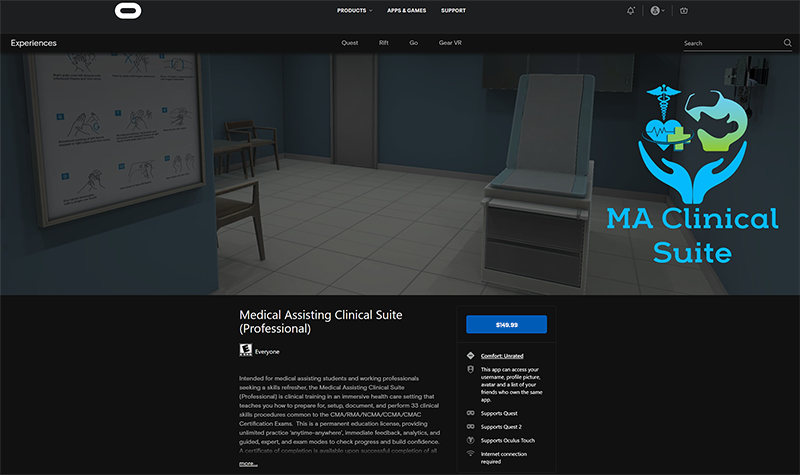Subcutaneous (SC) injections are administered into the adipose tissue layer just below the epidermis and dermis. This tissue has few blood vessels, so drugs administered by this route have a slow, sustained rate of absorption. Sites for SC injections include the outer aspect of the upper arm, the abdomen (from below the costal margin to the iliac crest) within one inch of the belly button, anterior aspects of the thighs, upper back, and upper ventral gluteal area.
Choose a site that is free of skin lesions and bony prominences. Site rotation prevents the formation of lipohypertrophy or lipoatrophy in the skin. Physical exercise or application of hot or cold compresses influences the rate of drug absorption by altering local blood flow to the tissues. Any condition that impairs that blood flow to the subcutaneous tissue contradicts the use of subcutaneous injections. Examples of subcutaneous medications include insulin, opioids, heparin, epinephrine, and allergy medication.
Learning Sequence Builds Confidence
The learner practices the procedure in the ‘guided mode’ (interaction hints and an expanded checklist guide) as often as they like.
When the learner is confident that they can accurately demonstrate the procedure without error, the learner plays the level in the ‘expert mode’ (no hints or checklist explanations) - which they can repeat as often as they wish.
Finally, when the learner is confident that they have mastered the procedure - they take a one-time ‘exam’ attempt which results in their grade for that procedure.
The Medical Assisting Clinical Suite (Professional) Edition is available for purchase through the Oculus AppLab for $149.99
Features
Guided Mode - ghosted hints show step-by-step positions, learner can 'see through' the patient to verify placement.
Oculus Quest Affordability & Ease of Use - next generation game development processes allow the untethered, mobile VR to present effective visual and interaction fidelity at 1/4 of the cost of desktop VR.
Feedback - Cloud-based enterprise incorporates real-time data acquisition that allows learner to track progress and mastery, and provides detailed insights for debrief with faculty.
Support - Enterprise incorporates Knowledge Base (with tutorial videos & FAQ) - combined with help desk support staff for learners and staff.
Subcutaneous Injections Checklist
- Prepare medication or solution as per agency policy. Always compare the physician orders with the MAR.
- Perform hand hygiene; gather supplies.
- Enter room and introduce yourself. Identify patient using two acceptable identifiers, explain procedure and the medication, and allow patient time to ask questions.
- Close the door or pull the bedside curtains.
- Compare MAR to patient wristband and verify this is the correct patient using two identifiers.
- Assess patient for any contraindications for the medications.
- Put on non-sterile gloves.
- Select appropriate site for administration. Assist the patient to the appropriate position as required.
- Clean the site with an alcohol swab or antiseptic swab. Use a firm, circular motion. Allow the site to dry.
- Remove the needle cap with the non-dominant hand, pulling it straight off.
- Grasp or pinch the area surrounding the injection site, or spread the skin taut at the site.
- Hold the syringe in the dominant hand between the thumb and forefinger. Insert the needle quickly at a 45- to 90-degree angle.
- After the needle is in place, release the tissue. Move your non-dominant hand to steady and lower the end of the needle. With your dominant hand, inject the medication at a rate of 10 seconds per ml. Avoid moving the syringe.
- Withdraw the needle quickly at the same angle at which it was inserted, while supporting the surrounding tissue with your non-dominant hand.
- Using a sterile gauze, apply gentle pressure at the site after the needle is withdrawn. Do not massage the site.
- Do not recap the needle. Apply the safety shield or needle guard on needle and dispose in a sharps container.
- Dispose of supplies; remove gloves and perform hand hygiene.
- Document procedure and findings according to agency policy.
- Evaluate patient response to medication.

